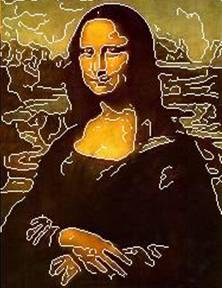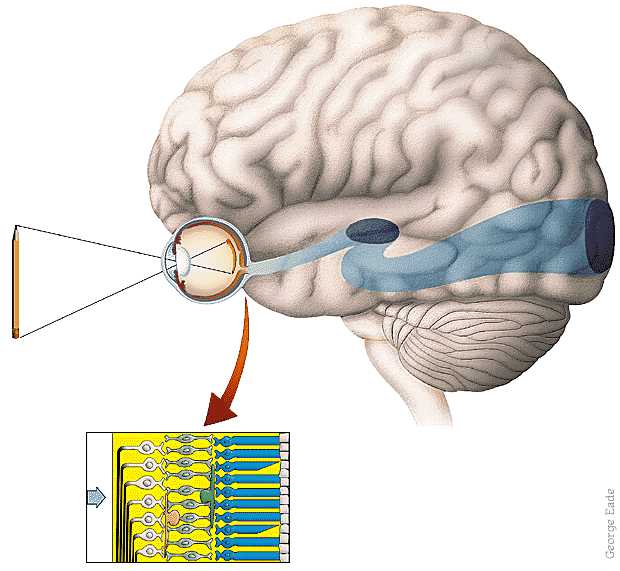
|
CS 332
Assignment 3 Due: Monday, October 15 |
|
This assignment contains two problems on the measurement of motion in 2D images. In the first, you
will complete a function to compute the perpendicular components of motion and analyze the results
of computing a 2D image velocity field from these components. In the second problem, you will
implement a stategy to track the moving cars in a video of an aerial view of a traffic scene,
and visualize the results. The code and image files that you need are contained in the
/home/cs332/download/motion folder on the CS file server. After downloading this
folder, set the Current Folder in MATLAB to the motion folder.
Problem 1: Computing a Velocity Field
In class, we described an algorithm to compute 2-D velocity from the perpendicular components
of motion, assuming that velocity is constant over extended regions in the image. Let
(Vx,Vy) denote the 2D velocity,
(uxi,uyi) denote the unit vector in the direction of
the gradient (i.e. perpendicular to an edge) at the ith image location, and
v⊥i denote the perpendicular component of velocity at this
location. In principle, from measurements of uxi, uyi and
v⊥i at two locations, we can
compute Vx and Vy by solving the following
two linear equations:
Vx ux1 + Vy uy1 =
v⊥1
Vx ux2 + Vy uy2 =
v⊥2
In practice, a better estimate of (Vx,Vy) can be obtained
by integrating information from many locations and finding values for Vx and
Vy that best fit a large number of measurements of the perpendicular
components of motion. The function computeVelocity, which is already defined for you,
implements this strategy. Details of this solution are described in an Appendix to this problem.
The function getMotionComps, which you will complete,
computes the initial perpendicular components of motion. This function has three
inputs - the first two are
matrices containing the results of convolving two images with a Laplacian-of-Gaussian function.
It is assumed that there are small movements between the original images. The
third input to getMotionComps is a limit on the expected magnitude of the
perpendicular components of motion (assume that a value larger than this limit is erroneous and
should not be recorded). This function has three outputs that are matrices containing
values of ux, uy and
v⊥. These quantities are computed only at the
locations of zero-crossings of the second input convolution. At locations that do not
correspond to zero-crossings, the value 0 is stored in the output matrices.
The function
definition contains ??? in several places where you should insert a simple MATLAB
expression to complete the code statements. See the comments for instructions on completing each
statement.
The motionTest.m script file contains two examples for testing your
getMotionComps function. The first example uses images of a circle translating down
and to the right. The expected results displayed for this example will be shown in class.
The second example, which is initially in comments, uses a collage of four images
of past Red Sox players, where each subimage has a different motion, as shown by the
red arrows on the image below:

Big Papi (upper left) is shifting down and to the right, Manny (upper right) is shifting right,
Varitek and Lowell (lower right) are shifting left, and Coco Crisp (lower left) is leaping up and
to the left after a fly ball. For both examples, the velocities computed by the
computeVelocity function are displayed by
the displayV function in the motion folder, which uses the built-in
quiver function to display arrows. Your results for the Red Sox image will roughly
reflect the correct velocities within the four different regions of the image, but there will be
significant errors in some places. Add comments to the motionTest.m script that
answer the following questions: (1) where do most of the errors in
the results occur? (2) why might you expect errors in these regions? Finally, the results
will vary with the size of the neighborhood used to integrate measurements of the perpendicular
components of motion. (3) what are possible advantages or disadvantages
of using a larger or smaller neighborhood size for the computation of image velocity?
Appendix to Problem 1: Computing the Velocity Field in Practice
It was noted earlier that in principle, we can compute Vx and
Vy by solving two equations of the form shown below, but in practice, a better
estimate can be obtained by integrating information from many locations and finding values for
Vx and Vy that best fit a large number of
measurements of the perpendicular components of motion. Because of error in the image measurements,
it is not possible to find values for Vx and Vy that
exactly satisfy a large number of equations of the form:
Vx uxi + Vy uyi = v⊥i
Instead, we compute Vx and Vy that minimize the difference
between the left- and right-hand sides of the above equation. In particular, we compute
a velocity (Vx,Vy) that minimizes the following expression:
∑[Vx uxi + Vy uyi -
v⊥i]2
where ∑ denotes summation over all locations i. To minimize this
expression, we compute the derivative of the above sum with respect to each of the two parameters
Vx and Vy, and set these derivatives to zero. This
analysis yields two linear equations in the two unknowns Vx and Vy:
a1 Vx + b1 Vy = c1
a2 Vx +
b2 Vy = c2
where
a1 = ∑uxi2
b1 = a2 = ∑uxiuyi
b2 = ∑uyi2
c1 = ∑v⊥iuxi
c2 = ∑v⊥iuyi
The solution to these equations is given below, and implemented in the
computeVelocity function:
Vx = (c1b2 -
b1c2)/(a1b2 - a2b1)
Vy = (a1c2 -
a2c1)/(a1b2 - a2b1)
Problem 2: Tracking Moving Objects
The motion folder contains a video file named sequence.mpg that was
obtained from a static camera mounted on a building high above an intersection. The first image
frame of the video is shown below:

The code file named getVideoImages.m contains a script that reads the video file into
MATLAB, shows the movie in a figure window, extracts three images from the file (frames 1, 5, and 9 of
the video), displays the first image using imtool, and shows a simple movie of the
three extracted images, cycling back and forth five times through the images. We will go over the
getVideoImages.m code file in class, which uses the concept of a structure in
MATLAB, and the built-in functions VideoReader, struct, read,
and movie.
Most of the visual scene is stationary, but there are a few moving cars and pedestrians, and a changing
clock in the bottom right corner. Your task is to detect the moving cars and determine their movement
over the three image frames stored in the variables im1, im2, and im3. (The clock has been removed from these three images.) To solve this problem, you will use a strategy
that takes advantage of the fact that most of the scene is stationary, so changes in the images over
time occur mainly in the vicinity of moving objects. The image regions that are likely to contain the moving
cars are fairly large regions that are changing over time.
Create a new script named trackCars.m in the
motion folder, to place your code to analyze and display the movement
of the cars across the three images provifed.
(You are welcome to define separate functions for subtasks,
but this is not necessary.) Implement a solution strategy
incorporating the following steps:
- For each pair of consecutive images (i.e. the pair
im1andim2, and the pairim2andim3), find image locations where many pixels within a neighborhood around the location have a large change in brightness between the two images. Some trial-and-error exploration will be needed to determine a reasonable neighborhood size, an appropriate threshold on the brightness change, and a good value for the fraction of changing pixels in the neighborhood that is used to decide that the region may contain a moving car - Find large connected regions of locations where brightness is changing between the two images
— these regions are likely to correspond to individual cars or parts of cars (the built-in function
bwlabelcan be helpful here) - Determine the approximate center of each large connected region, corresponding to the rough location of
each car (the built-in function
regionpropscan be helpful here) - Given the car locations identified using the image pair
im1andim2, and the car locations identified using the image pairim2andim3, match up the locations of the cars at these two moments in time, assuming that a car region at one moment moves to the closest car region at the next moment - Display the results of your analysis. In the solutions that I demonstrated in class,
subplotwas used to create one figure window with three display areas showing the first imageim1and the large connected regions obtained from analyzing the two image pairs, with superimposed red dots shown at the center of each region. A second figure window displayedim1with superimposed red lines showing the movement of each car over time.
Hints: The file codeTips.m in the tracking folder provides simple
examples of some helpful coding strategies,
including examples that use the built-in bwlabel and regionprops functions,
access information stored in a vector of structures, and superimpose graphics (using the built-in
plot and scatter functions), on an image that is displayed in a figure window.
Be sure to comment your code so that your solution strategy is clear! (You are welcome to use a different strategy than the one outlined above.)
Submission details: Hand in a hardcopy of any code files that you wrote or modified.
Drop off an electronic copy of your code files by logging into the CS file server, connecting to your
motion folder, and executing the following command:
submit cs332 motion *.*
